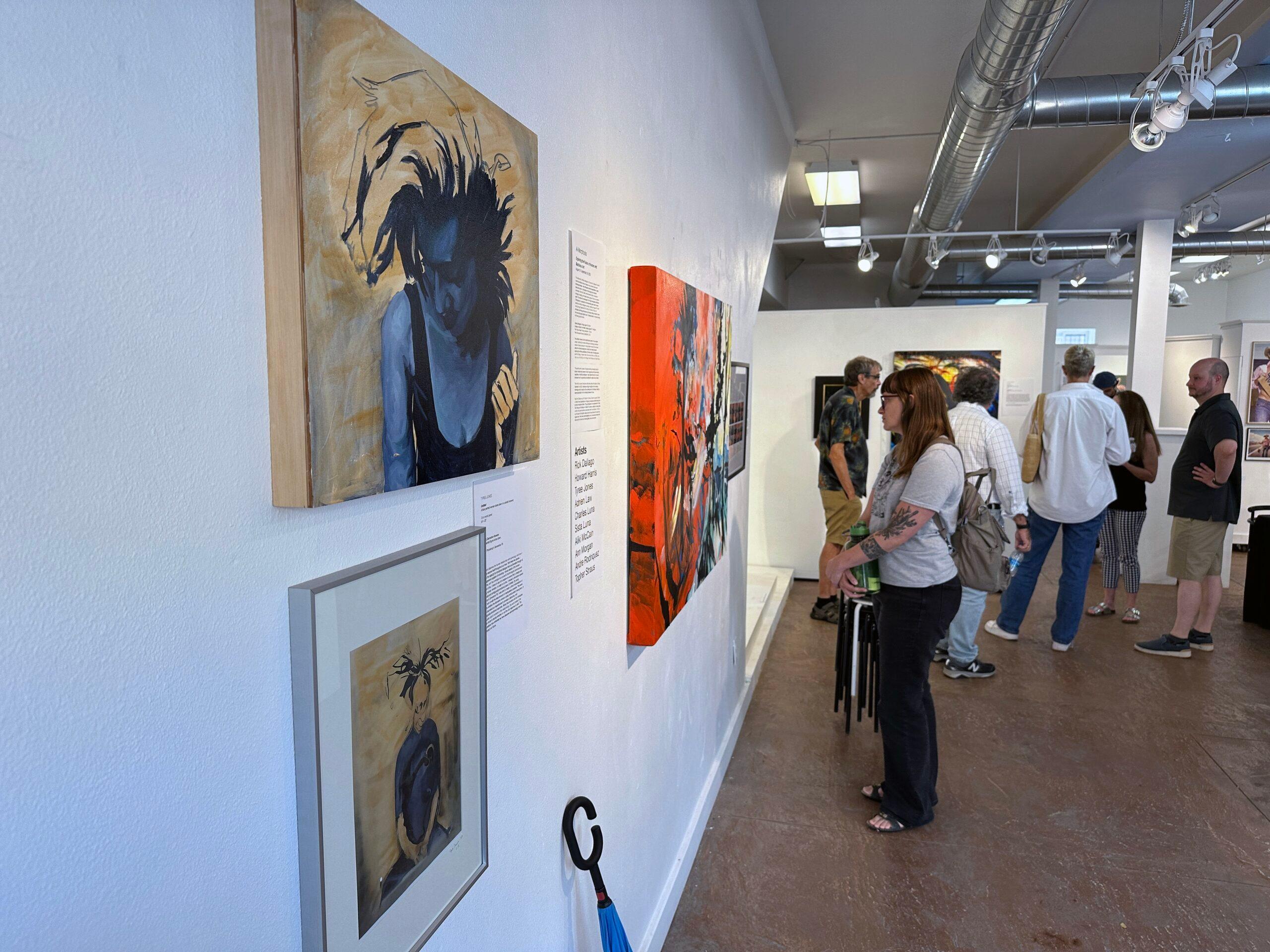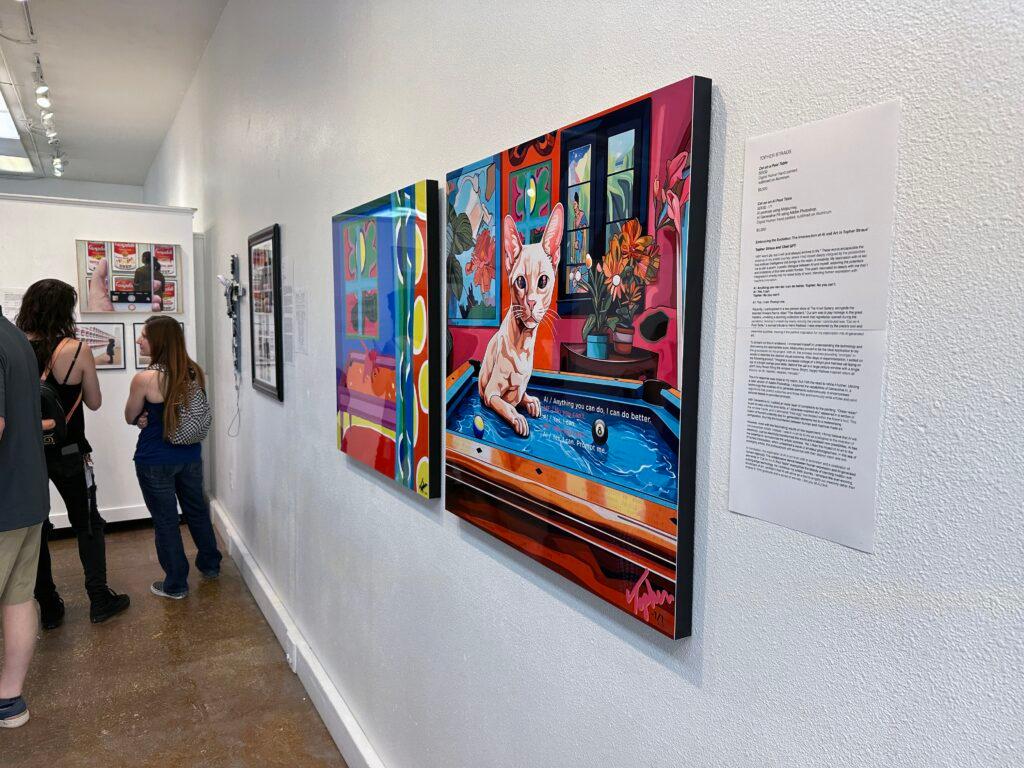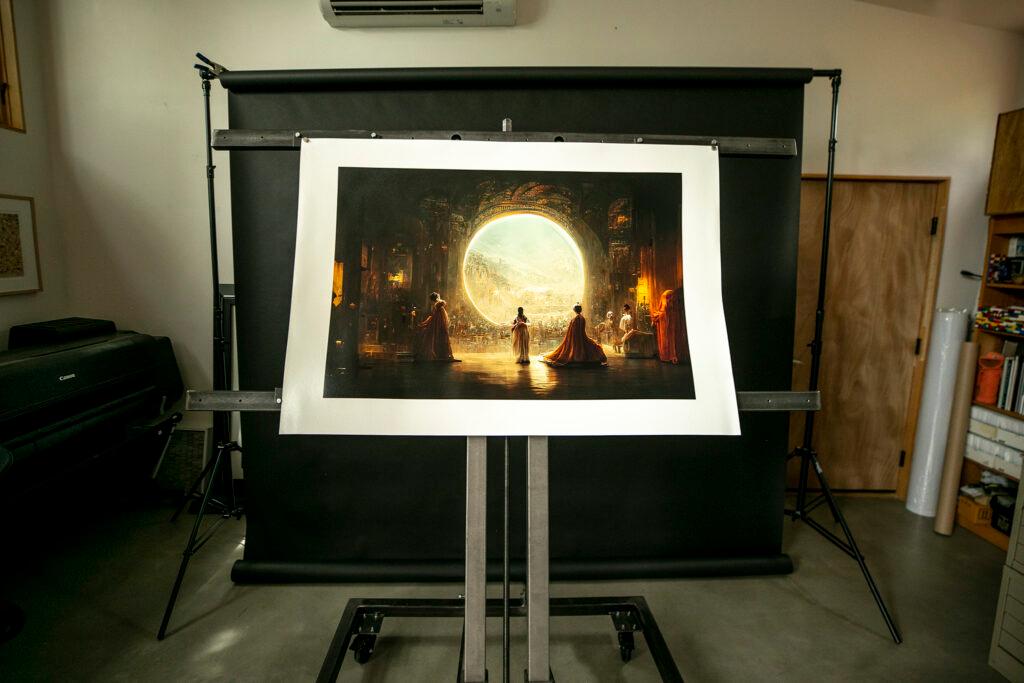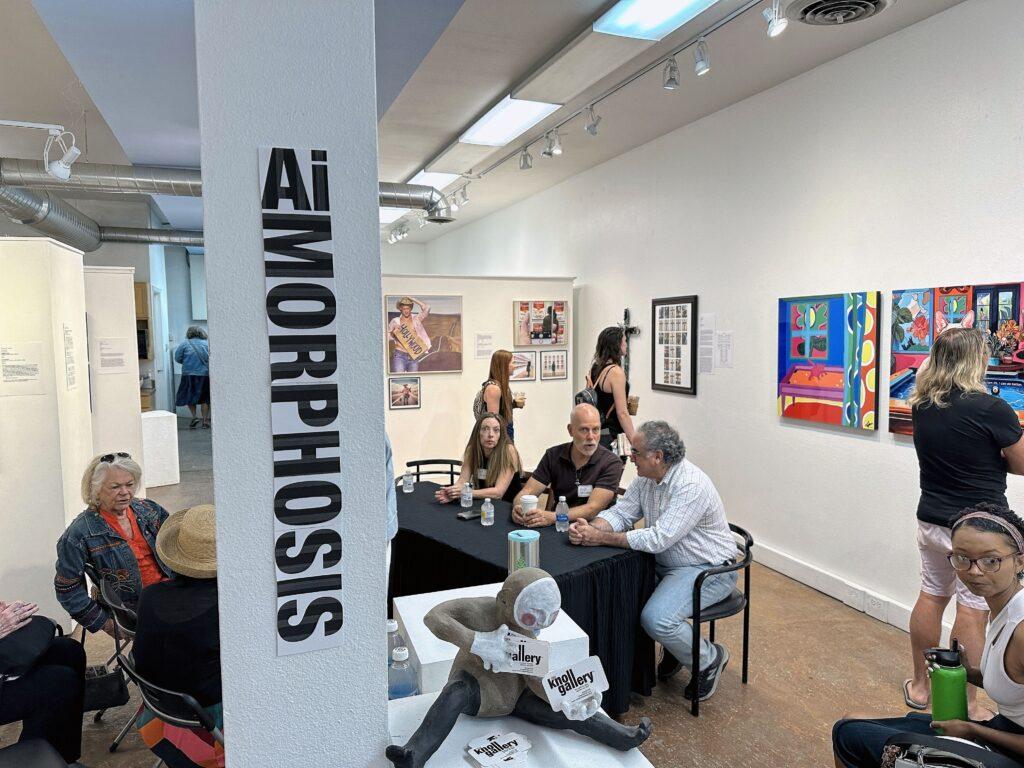
Can something that wasn't made by a person still be considered art? This question has sparked a contentious debate among artists and critics alike as artists of many disciplines harness the power of AI as a catalyst for new forms of expression and redefining traditional creative boundaries.
AI-image generators like DALL-E 2, Midjourney, and even Photoshop’s Generative Fill feature have raised questions about whether computer-generated art is real and where the creative process is headed. Recent court decisions upholding the Copyright Office's decision that AI-generated art can’t be copyrighted have provoked even more discussion.
A lot more people took notice when Jason Allen and his Midjourney-assisted piece, Théâtre d'Opéra Spatial won a prize at last year's Colorado State Fair.
When speaking to CPR public affairs reporter Andrew Kenney, Allen said Midjourney helped him produce the concept he had while half-asleep. He tweaked the scenario and style for more than 600 prompts until the platform provided the visual foundation. Allen added more pixels and details to photographs using Photoshop and an upscaling service.
“In the sense that you're wanting to create something based on your own vision, it does require a certain level of knowledge and skill to use effectively. ‘Prompt crafting’—writing and arranging an AI request—is already a key talent in the emerging AI business,” Allen said.
Allen claims that he created the piece, even though the software has amazing new skills. Artists’ comments, notably the assumption that AI can't be art, have bothered him.
“I don’t need to be called an artist to get some kind of validation from you or anybody else,” he remarked. “I'm an artist because I know myself. I made this.”
He stated that some artists are unhappy when others become inventive.

“I think a big issue in the art world is that anyone can make art. It's possible to produce art without being an artist, but they may not like it.” Allen remarked.
While the controversy around Allen's win continues, others are ready to keep exploring AI and art. Gallery owner Niza Knoll wanted to start this vital discussion early on, so she invited a few artists to reinterpret or rework an existing piece of their own with the help of AI technology, for a unique show at her gallery in the heart of Denver's Santa Fe Art District, called “AI-Morphosis: Exploring the Fusion of Human and Machine in Visual Art at Niza Knoll Gallery.”
“A lot of them had never done it before, and they were a little nervous, and two or three of them have done it before and have used it. So it's very exciting. I just find it amazing. I love new things and I think you have to try them out,” Knoll said
Artist Ann Morgan has worked in tech since 1997. She built her own AI model, using her own images and data, and used them as text prompts for AI-generated images.
“I built my own model, so I use that to develop sketches to work from paint, and I developed my own model using all of my own images and things that I've collected from friends and different things I've collected from the internet. So it's all my own memories and all my own data that I'm pulling from. I typically work with AI.” Morgan said.
Andre Rodriguez remains skeptical after his investigation of AI platforms like Dolly and Midjourney.
”I've seen quite a bit of work that's been done by AI generators or people using the generators, and I found some of it interesting. I found some of it kind of maybe cliché, but maybe that's the starting point with a lot of different kinds of art forms is getting the clichés out so then you can start to explore the rest of what's possible. So I was a little opposed to it, but definitely very curious. And a lot of times when I tell people I'm a digital artist, at least the last year or so, people say, ‘Oh, you do AI art or AI animations.' And I would say that some of my work maybe resembles some of what AI has been doing, so I really wanted to try to understand it more than anything.”
However, this collaboration presents complex ownership, authenticity, and ethical issues. Copyright concerns and the risk of diluting human-made work remain.
Artist Rick Dallago said he thinks there is a false sense that the creative industries are protected from the impact of AI, but now sees more questions for all parts of society.
“But I think that the biggest impact is going to be obviously on the market because I think in a lot of industries, labor is something that is always something that people want to pay less for. I mean, we can see that now with all these labor strikes happening, and as we order more and more things on Amazon, how many people are being displaced from jobs? I think we could be looking at the same thing when it comes to people buying art or maybe even creating their own art. There's a lot to unpack here with this, and I think it's going to have a huge impact on the economy” Dallago said
While testing AI in Photoshop, Tyree Jones considered its impact on her paintings.
“It felt a little bit constricting as an artist. So I just decided to let it do what it wanted without my interference and was just surprised at how simple it was," said Jones. "I thought it would be much more technologically advanced,”
Jones said her biggest takeaway is that the art community is always evolving.
“I think if there is something new that seems a bit daunting, it's important to just go head first into it instead of being so afraid of it because I was afraid of it at first and then being encouraged to use it made me feel so much more comfortable with it. It made me understand it in a better way. And it even made me appreciate some AI art that I do see when people are editing and mashing together different photos that they make that does take time and effort. So it just gave me a completely different outlook on it and let me be more open to new ideas.” Jones said.

Jones is among the artists questioning AI databases cataloging and using the work of artists, which might present a danger of being exploited.
“I feel like artists are already exploited, I think that artists already aren't protected when it comes to copyright laws and having their work stolen from them. So I don't think AI is going to change any of that,” said Jones. “If anything, I do believe that with the abundance of everyone being able to have access to these tools and being able to make so many things now that only artists had the gift to make, it will up the value of things that actually are handmade by artists because anyone can go online and make something beautiful, but then the artists themselves will be praised when it's their own original work and not something that was generated by AI.”
Topher Straus said being invited to be in the Niza Knoll Gallery show was an awesome experience and he learned a tremendous amount, but doesn't think he will continue to use AI in his practice.
“The reason that I don't want to use AI in my work going forward is because I'm an artist for a reason. I like to use my hands, and I'm very tactile. And what I found is that at least where it's at now, artificial intelligence, especially using Midjourney, is all prompt-based, meaning that to generate art using Midjourney, it's basically poetry. It's learning how to use words in a way to describe visually what you want to obtain.” Straus said
Straus said the copyright office's decision to reject ownership of AI-generated works is a murky but necessary conversation.
“I think it's a smart decision to exclude copyrights from anything that uses AI, and I support it. I like it. And I think that's going to help to further differentiate who's a professional artist and who uses AI, kind of like who's a professional photographer and who uses their iPhone.”

AI is also impacting the music industry. Earlier this year, a song employing AI to mimic Drake and The Weekend was posted on streaming sites, then withdrawn. Some saw it as proof that unregulated AI may learn from and repurpose music companies' copyrighted property.
Earlier this month, The Beatles released ‘Now and Then,’ which is billed as their last song and features John Lennon’s vocals that AI-extracted from a demo he recorded in the 1970s. Paul McCartney, George Harrison, and Ringo Starr began working on the long-rumored John Lennon demo in February 1995 for The Beatles Anthology project, but it was never finished due to the technological challenges of working with Lennon's 1970s vocal tape.
In 2022, a software technique built by Peter Jackson and his crew for the documentary series “Get Back” allowed Lennon's vocal and piano parts to be separated. Thus, all four Beatles could revive and improve the original recording. The Beatles' continuous creative curiosity and technical obsession are evident in this extraordinary musical archaeology story.
“Now and Then's” journey took more than five decades, and AI technology made it possible.
AI can now create images, music, and other things using information from previously produced works. The issues in the recently resolved screenwriter and actor strikes also dealt with AI and creative work.
The question remains: Are the works created by AI… art?









